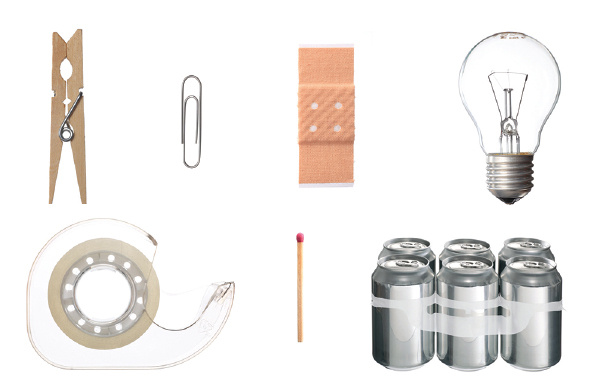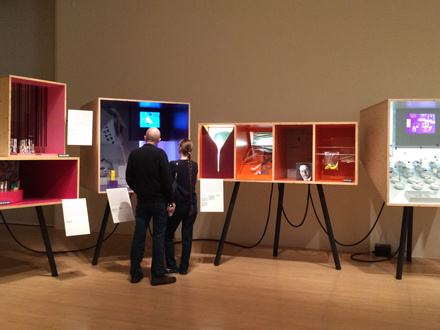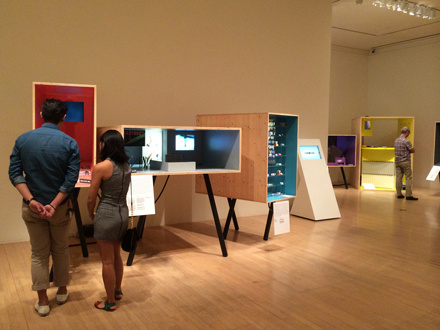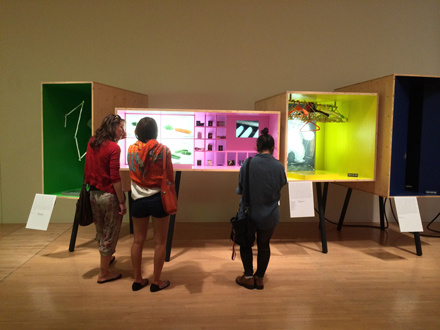When we think of brilliant design, we usually think of monumental feats of engineering, architecture, aeronautics, even city planning. Yet modest objects we use every day reflect the same process of problem solving, design, and testing. They are the unrecognized heroes of industrial design, where simplicity and necessity meet ingenuity.
This internationally touring exhibition highlights thirty-six modern objects and tells the story of their invention through patent drawings, historical information, and vintage advertisements. Organized by the renowned Vitra Design Museum in Weil am Rhein, Germany, in cooperation with Hi-Cone (manufacturer of the multipack can holder), Hidden Heroes is enlivened by an innovative, boldly colored exhibition design in which objects are clustered in oversized shadow boxes, each a creative scenario unto itself.
Designed to be efficient as well as economical, most of these objects have scarcely changed over the years—a testament to the accomplishments of the industrial designers who approached the most ubiquitous tools of modern life with a keen sense of design elegance. Think about the streamlined functionality of coffee filters, paperclips, and coat hangers. Surprised to see the common light bulb, teabags, and Band-Aid in a museum? These unsung heroes of design brought new ease to everyday life—and exemplify the spirit of post-industrial innovation.
The exhibition has traveled throughout Europe, from the Vitra Design Museum in Germany to The Science Museum in London. The San Jose Museum of Art, one of only two venues in the United States, is pleased to bring the project to Silicon Valley audiences, who so highly value the power of innovation.
Click here to see the Vitra Design Museum’s interactive online version of the exhibition.
Sponsors
- McManis Faulkner



